“What Boots Should I Wear on the Trail?”
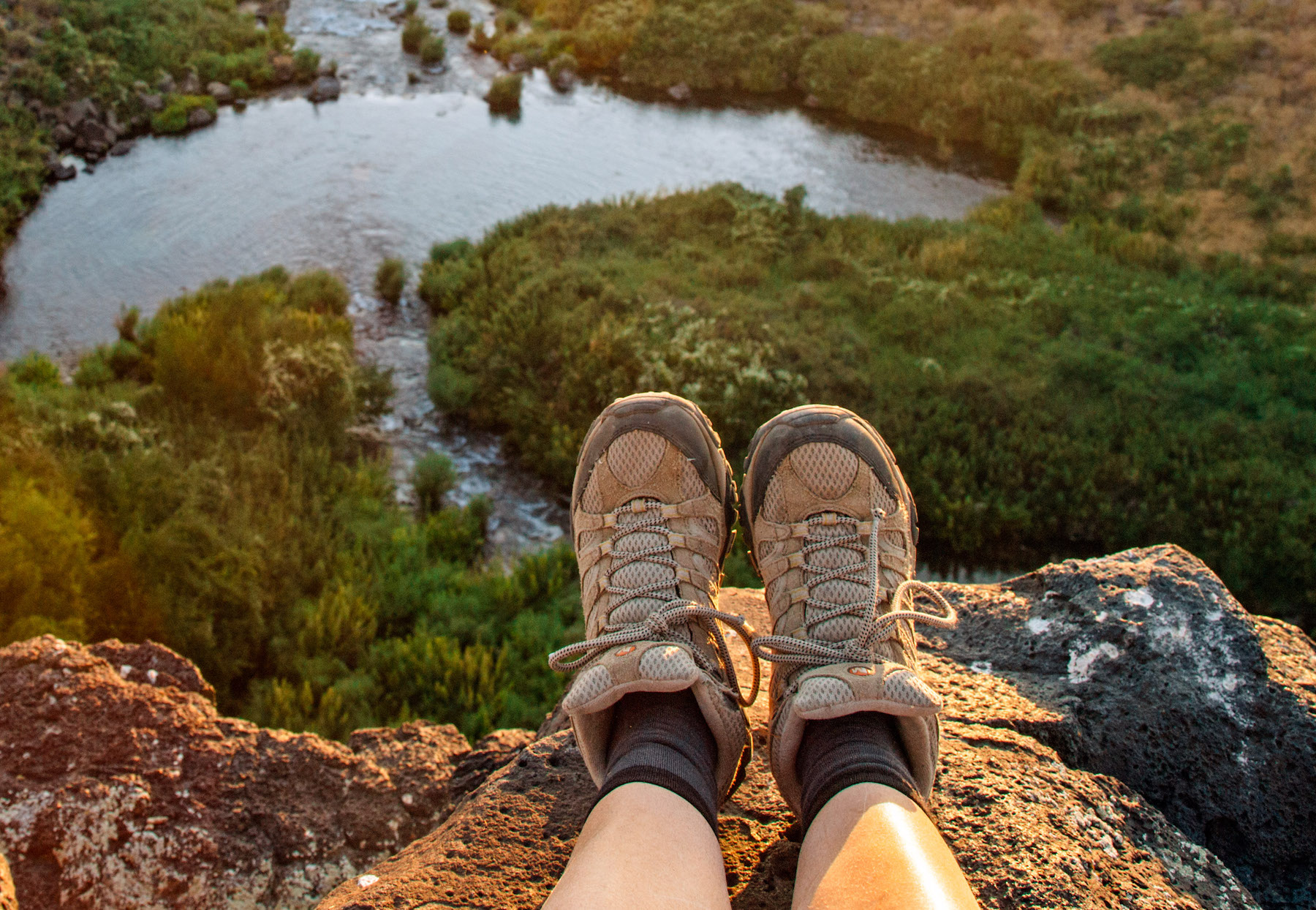
“What Boots Should I Wear on the Trail?”
Our Warm Weather Recommendations
By Gale Straub
Banner image by Megan McDuffie
This is a question we get a lot via email and social media. And in the moment, we want to have an answer for you, we really do. The thing is, though, there isn’t one answer. Everything about you makes you unique. We’re always amazed by how many ways there are to see the world. Your hiking needs are no exception.
We pulled some of our consistent contributors to get a feel for what they wear on the trail. Here’s what we found out:
I think the trick with hiking boots is, once you find a pair you like, invest years into them.
If you…
Crave Durability
“I love the Lowa Renegade Boot. They have that already-broken-in feel from the get-go, while still providing great support. They’re sturdy enough to carry me through a summer of heavy backpacking in the rocky Sierras, yet lightweight enough to tote to Alaska for day hikes across spongy Tundra. The Gore-Tex lining is crucial for keeping my feet dry. Best of all, they’ve never given me blisters.”
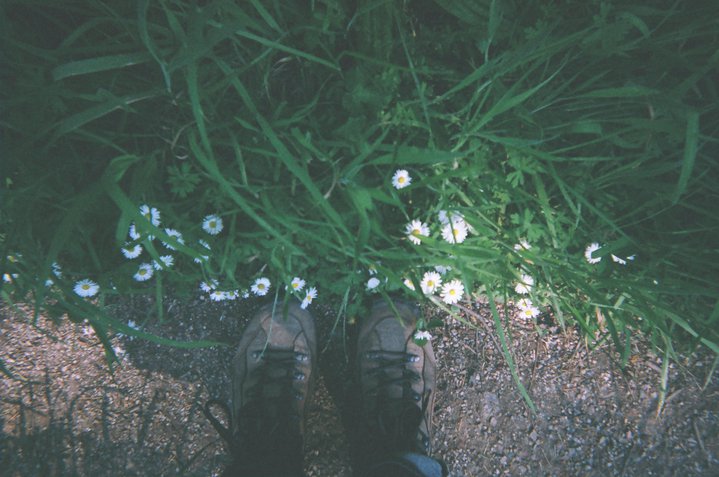
Madeleine’s Lowa Renegades
“I always wear Vasque hiking boots — they’re the most durable, versatile, and comfortable boot I’ve found that works for me. Since I’m not into hiking around puddles on trails (hiking around puddles causes further erosion and widens the trail), I need waterproof boots. More specifically, my favorite boots are the Vasque Eriksson GTX boots. They’re super waterproof, heavy, breathable, and the soles can withstand the tough Sierra Nevada granite I hike on. I’m usually backpacking and they are SO good with distance.”
Need a less heavy-duty boot? Try the Vasque St. Elias GTX.

Miranda in her Vasque Eriksson GTXs
Have Wide Feet
“I have relatively wide feet and high arches, and struggled to find a pair of hiking shoes that fit well enough to hike steep trails multiple days in a row. Three pairs and a few bruised toenails later, I landed on Keen Voyageurs.
“These rugged, mid-height hikers with mesh side vents in their leather upper, also feature a front toe-bumper for rocky trails and clumsy hikers prone to stubbed toes (like me). The Keens have enough arch support and a large enough toe box that my feet stay put in the cushy back and don’t bang forward or get pinched, even going downhill. They’re pretty heavy, but sturdy on uneven terrain. While I don’t love the styling of Keen’s toe protection, the comfortable support and toe-stub-prevention make me overlook the bulky toe.”
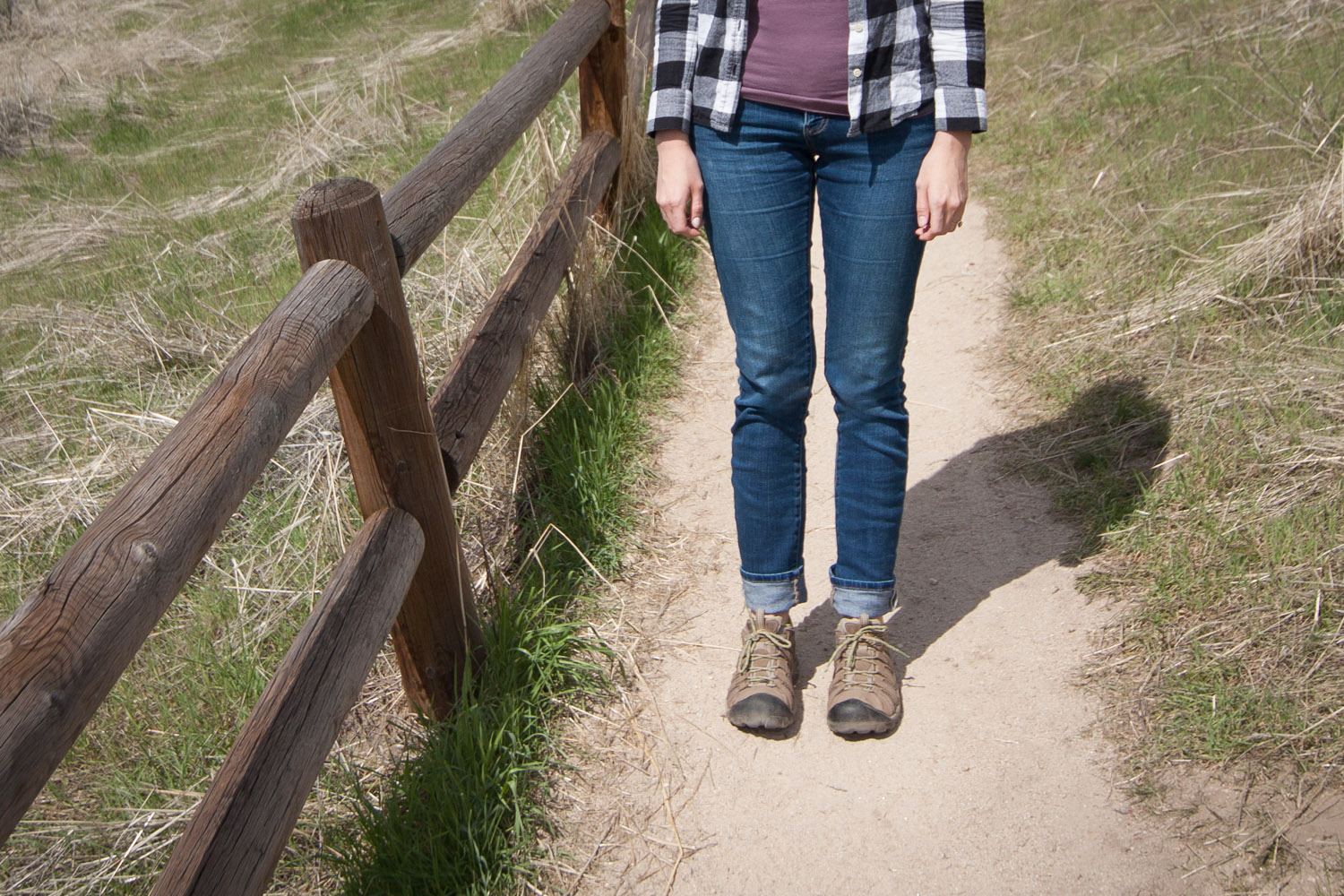
Hailey in the Keen Voyageur
Prioritize Flexibility
“I’ve worn Merrell’s Moab Ventilator Mid boots for the past four hiking seasons. They are well suited for the type of hiking and backpacking that I typically do, which is mixed alpine terrain, 5-12 mile days, in fairly dry conditions. The Vibram sole is super grippy so I feel sure footed even when hiking on rocks or granite (common in the Sierras), and the mid-level profile of the boot means I get good ankle support without the boot limiting my range of motion. The boots are very breathable, which for me is key in preventing blisters. I’ll also note that I developed a pretty bad case of plantar fasciitis on the John Muir Trail (wearing a different pair of shoes!) and I have not had issues with it since switching to the Moab Ventilators. Perhaps coincidental, but I do give the boots some credit!”
— Megan McDuffie, Fresh Off the Grid
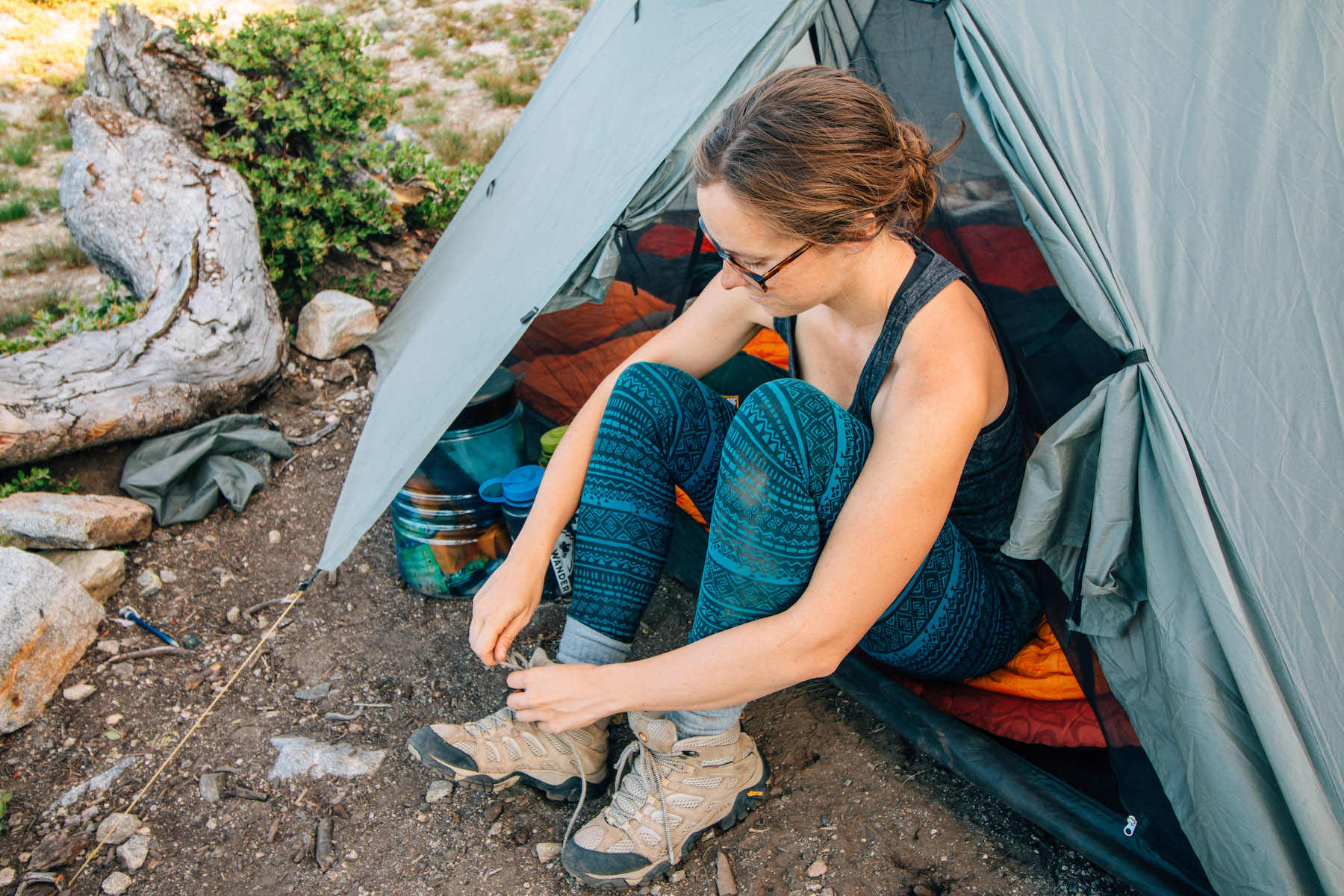
Megan in her Merrells – Photo by Michael van Vliet
Keep it Light & Roomy
“I have not found a high top hiking boot yet that I can stand by a recommendation, but as far as low top, spring/summer goes I love Salomon X Ultra 2 GTX. Mine are not this year’s model (or even last year’s,) but if you have a wide feet like mine they are great because they have a wide toe box to accommodate. I like the room.”
Have Narrow Heals
“I am the queen of blisters on my heels – I actually need to be careful about them because I have a tendency towards getting cellulitis in one heel, a bacterial skin infection which could get serious on the trail quickly.
“I’d heard a lot of reports of Danners chewing up your feet, so I was hesitant to try them. When I did, I wore my Danner Lights for two weeks of daily wear as a fail safe. I took them on the Lost Coast Trail in California and was happy to not get any blisters! (I also used duct tape on my heels, but it felt like a small miracle.) I’ve been a Danner fan since.”
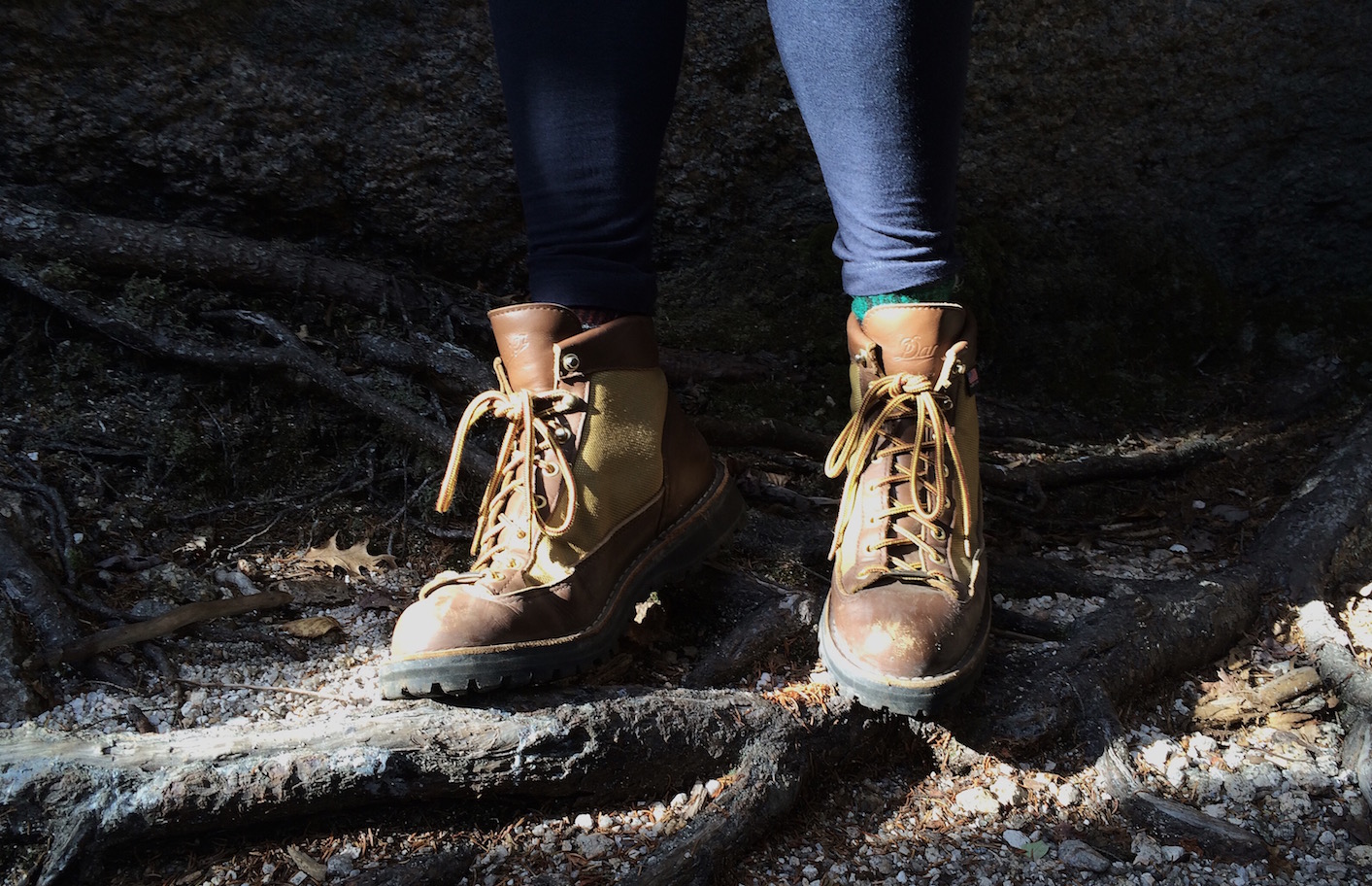
Gale wearing Danner Lights (Also a toe stubber)
Need Versatility
“Because I don’t have room to own too many pairs of shoes, I choose high quality products and then push them to the max. I’ve worn these the Teva Arrowoods working on our van build, camping out of our van and hiking on local trails in Colorado. Whenever I go hiking, these are my go-to shoes. I typically choose hikes between 3-5 miles and with low elevation gain. However, I have hiked in these on steep terrain, such as a recent one I did that had 2,000-ft gain in 1.5 miles. The Tevas handled loose gravel and switchbacks just fine. They’re comfortable, water resistant, flexible and pretty warm, even in the snow. I like that they are easy to put on (not too many ties or loopholes) and that they work well (I think) with anything I wear. I have worn them out in the city, but also in remote areas with nobody around.”
— Kathleen Morton, Tiny House Tiny Footprint
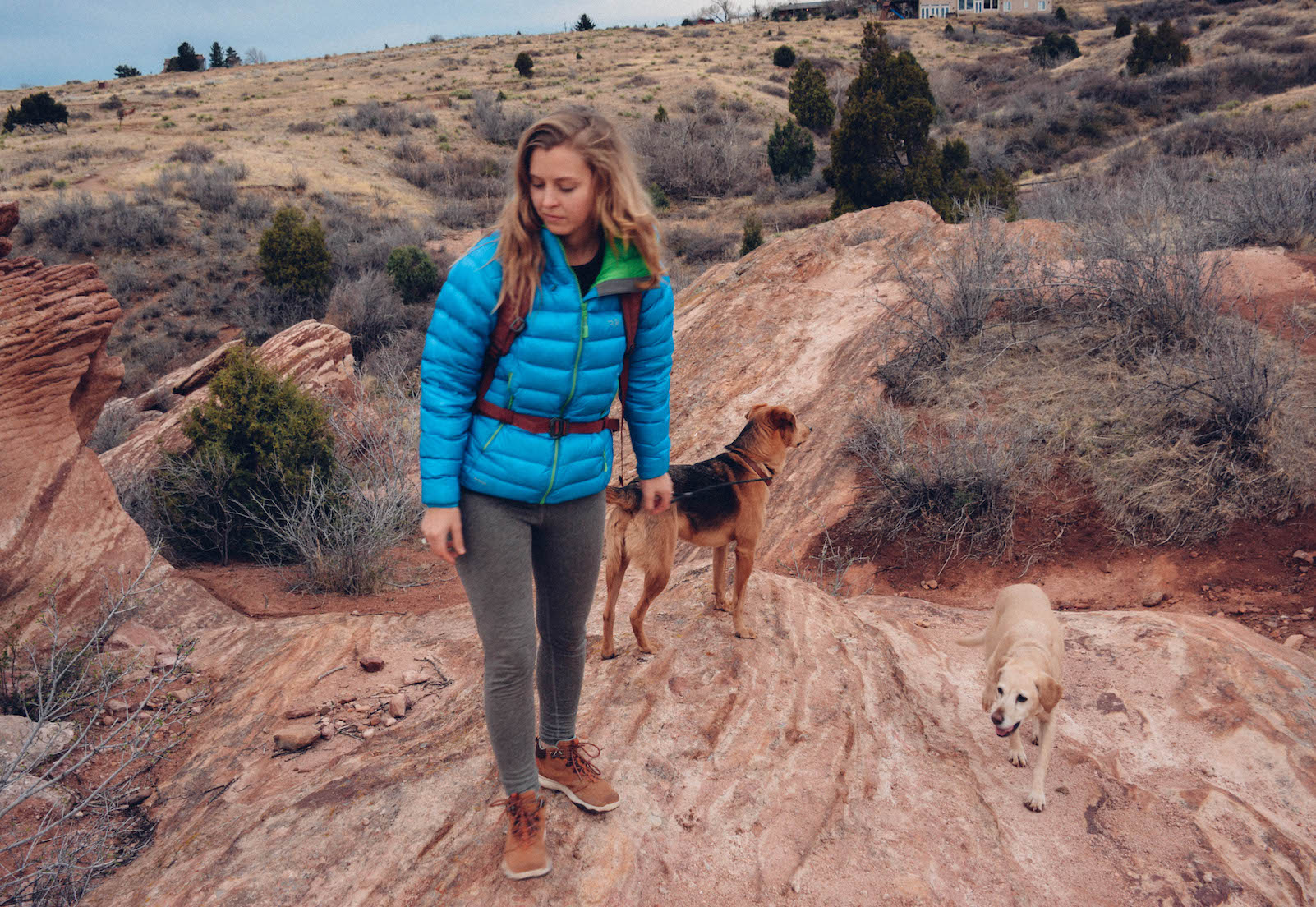
Kathleen in Teva Arrowoods
Are a Loyal Hiker
“Ironically the best pair of hiking boots I own are Timberlands from 1998. I’ve tried my share of boots in my adult life, always searching for the one that molded to my foot best and made me feel most comfortable in backcountry terrain. After years of never quite getting it right my mom mentioned she found my ‘all girls summer camp hiking boots from when I was 8.’ I had her mail them to me and Eureka! Timberlands are great worn. Like, really worn, 9 years worn. They last more than a decade. I’ve worn them in every climate and in almost every state. I think the trick with hiking boots is, once you find a pair you like, invest years into them. When you’re relying on them to take you 30 miles backcountry or through rivers and in mud, you want that confidence secured.”
— Kristen Blanton, Hello America
If you’re looking for a new pair, we like the Timberland Alderwood Boot ->

Kristen in her worn-in Timberlands
“So funny, I’ve had all my boots for so long that they are discontinued. The Vasque Breeze treated me well for years for backpacking. For day hikes, I usually wear my Salomon trail runners. For rainy day hikes, lately I am wearing the Teva Arrowood boots. For anything needing something heavier, I go with the Vasque Sundowner GTX.”
— Erin Sullivan, Erin Outdoors
Our Tips:
- Always make sure you try your boots on. This isn’t something you want to buy blindly. — ES
- Think about your last pair of boots. Did you have consistent pain? Where? Is there a boot that addresses it? — GS
- Write down a list of your needs. For example: ‘I need waterproof boots that’ll make it through a 4 day backpacking trip on uneven terrain.’ But you also may need a pair that are good for day hikes. Is this the same pair or do you need to invest in two? — GS
- Know the lingo. Gore-Tex is a great waterproof material. Vibram soles are known for their grip. All-leather boots take longer to break in, but the payoff is worth the patience. — GS
- Once you find [a brand] that fits, try that brand on first for the future. — ES
- Break them in before a big trip. Wear them around for 2-3 weeks before you set off. — ES
Photos by the women wearing the boots, unless otherwise noted.
Note: This article contains affiliate links. If you make a purchase through a link, we earn a small commission at no charge to you. Thank you for your support!
Be the first to comment